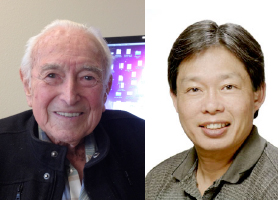June 13, 2014 - Energy Academic Group
Mechanical Batteries and High Performance Carbon-Composite Flywheels for Energy Storage
June 13, 2014
ME Lecture Hall
1300
Richard Post & Bob Yamamoto
Lawrence Livermore National Laboratory
Abstract
The “new breed” of flywheel under development at the Lawrence Livermore National Laboratory (LLNL) embodies several novel design concepts for storing electrical energy as rotational energy. The new designs specifically address the requirements of low capital cost, long service life with minimal maintenance, and low rate of self-discharge, features that are essential for satisfying a growing need for cost-effective energy storage. LLNL is currently focused on two specific applications:
- Bulk storage of electrical energy where the flywheel module may be charged at one time of the day (for solar or wind power systems), storing its energy for use many hours later. It may be necessary to insert an interval of many hours, or even many days, between the time that the Electromechanical Battery (EMB) is “charged” and when it is discharged into a load.
- Use of energy storage for vehicular applications, e.g. those of electric-powered automobiles, both full electrics and hybrids. In addition to the above mentioned attributes, these EMB’s would require high electrical turnaround efficiency (important for optimizing regenerative braking), and the ability to withstand significant vehicular “g” forces. Current computer-based simulations predict that our EMB’s provide a substantial increase in peak power and a doubling of the driving range as compared to electrochemical battery packs of comparable size and weight.
The integration of our EMB’s three key technologies, namely the composite rotor, the passive magnetic bearing system, and the new version of the electrostatic generator/motor, which distinguishes the “new-breed” LLNL EMB from all other commercially available flywheel-based energy storage systems, will be discussed.
Biography
Richard F. Post
Physicist/Senior Scientist
Lawrence Livermore National Laboratory
Dick Post is currently the Principal Scientist for the Electromechanical Battery (EMB) program at Lawrence Livermore National Laboratory (LLNL). Dr. Post has a long ranging career, spanning 75 years, which includes topics such as controlled nuclear fusion, electron accelerator research, magnetic levitated trains, submarine sonar/underwater sound propagation (Naval Research Laboratory, Washington, DC) and energy storage. He was one of the first employees at LLNL, coming to the lab in 1952, the year it was open. Dick has an undergraduate degree in physics from Pomona College, and a PhD in physics from Stanford University.
Dick holds over 40 patents in the fields of particle accelerators, controlled fusion, magnetic levitation, isotope separation, passive magnetic bearings, and electrostatic generator/motors. He is an American Physical Society Fellow, an American Nuclear Society fellow, and an American Academy of Advance of Science Fellow. In addition, he has received the following awards:
- Meritorious Civilian Service Award, U.S. Navy, 1945
- Doctor of Science (Honorary), Pomona College, 1959
- U. S. Energy Research and Development Administration, Distinguished Associate Award, 1977
- American Nuclear Society, Outstanding Achievement Award, 1978
- American Physical Society, James Clerk Maxwell Prize, 1978
- Distinguished Career Award, Fusion Power Associates, 1987
- Lifetime Achievement Award, Lawrence Livermore National Laboratory, 2012
Robert M. Yamamoto
Principal Investigator: Electromechanical Batteries
Lawrence Livermore National Laboratory
Bob Yamamoto is currently the Principal Investigator for the Electromechanical Battery (EMB) program at the Lawrence Livermore National Laboratory (LLNL). Mr. Yamamoto has worked at both National Labs (LLNL and LBNL) and the private sector (TRW and General Atomics) during his 37-year career. Areas of expertise include solid-state lasers, magnets (resistive and superconducting), cryogenics, vacuum and pressure vessels, which has culminated in the designing and building of experimental hardware in excess of $100M. He has a BS in Mechanical Engineering from UC Berkeley, a MBA from Golden Gate University and is a registered professional mechanical engineer in the state of California.
Bob has received three R&D 100 awards (development of a human cancer treatment system utilizing magnetic fields, a diode-pumped laser for humanitarian mine clearing and development of a land mine locator) and has authored/co-authored 48 technical papers. Work Mr. Yamamoto has supported has been the subject of 16 scientific magazine articles. He has also been highlighted on the History Channel’s “Tactical To Practical” television series for the development of the world’s most powerful solid-state diode-pumped laser.
POC
Dr. Daniel A. Nussbaum
Naval Postgraduate School
Principal, Energy Academic Group
Monterey CA 93943
Phone: 831-656-2387
Mobile: 831-324-3228
Email: dnussbaum@nps.edu


